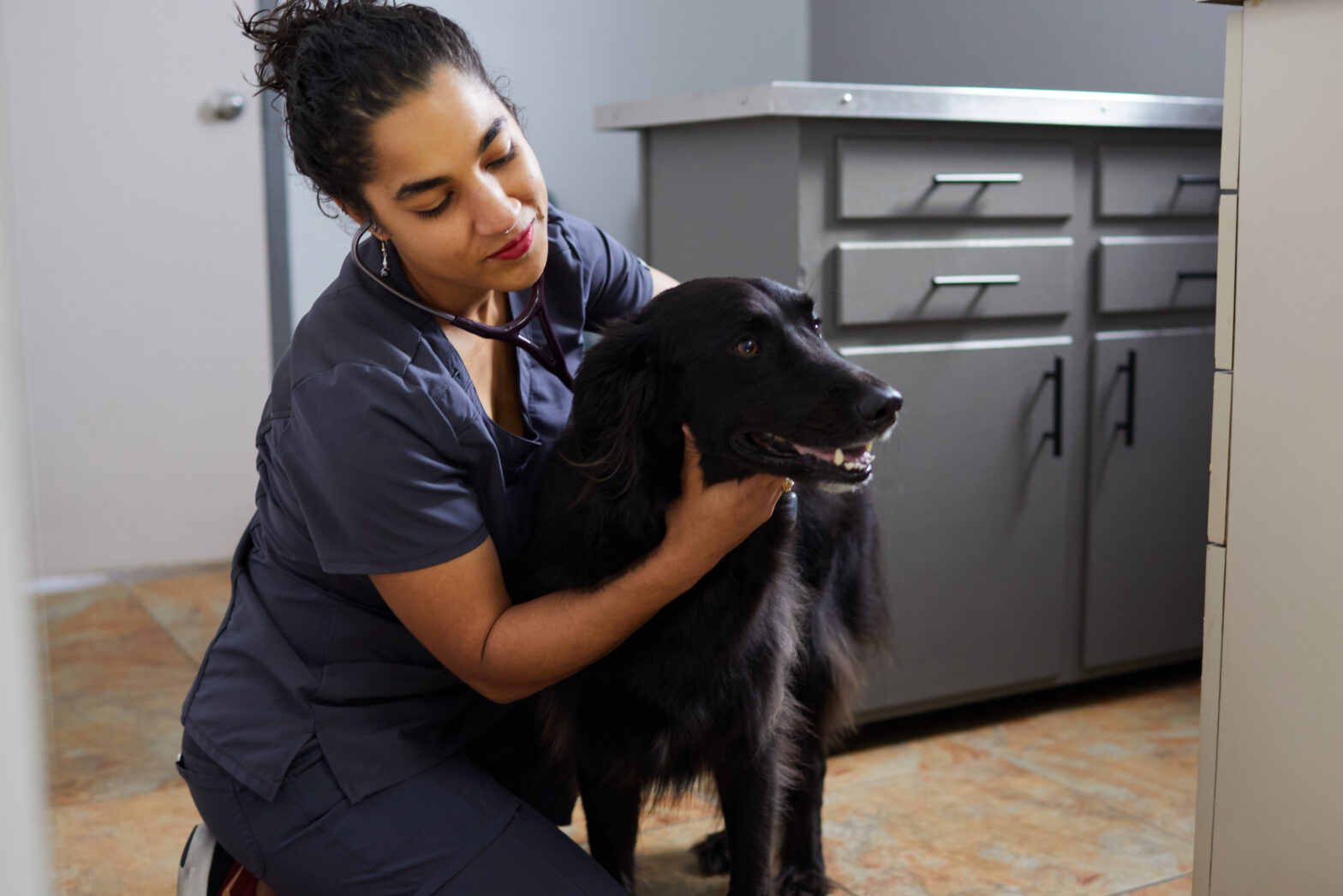The time comes in every new vet’s career when you realize that you’ve made it. You’re no longer in school, others are looking to you for answers, and depending on who you are, you’re either flattered or terrified. Probably a combination of both. We’ve all been there. This article will outline what you need to prepare for your first solo shift as a relief vet—from someone who’s been there and done that. However, if you’re starting any new veterinary job, these tips will apply to you, too.
Getting ready for a solo vet shift
It sounds more intimidating than it is. Working as the only vet—or one of very few vets—present during a shift is a big responsibility! You might feel questions creeping up:
“Am I ready for this?”
“What if I don’t know all the answers?”
“What if I didn’t learn anything in school and I just am really good at studying but I won’t know what to do when…”
Stop. Take a deep breath. You got this. Imposter syndrome is a completely normal thing to feel before achieving a career milestone, and many of us continue to experience it throughout our careers. It’s important to recognize how far you’ve come and that you’ve earned this.
Feeling ready to take on your first solo shift? Let’s go over how to prepare.
How to prep for your first solo relief vet shift
If you have a morning shift, make sure you pack the night before. Even if it’s a later shift, getting your things ready to go in advance will help to calm your nerves a lot. Let’s go over some of the basics:
What to bring to a vet shift—the essentials
- Pack a lunch. But also throw in some granola bars or quick snacks in case it gets busy. Check if they have a fridge or bring an insulated lunchbox. You can also google the area to see if there are any good restaurants nearby.
- Extra hair ties (if this applies to you). It’s always good to have extras in case one snaps or the day gets… messier than you’d planned.
- Water! Get a reusable bottle to cut down on overall costs and keep your water cold!
- Your trusty stethoscope (if you like to bring your own).
What should I wear as a relief vet?
Great question. When working in a new practice or setting, it can be tough to decide what to wear! Here are my tried-and-true recommendations:
- First, figure out if you’re wearing scrubs or business casual. Roo listings will often let you know if there’s a dress code, but if you’re not sure, you can always call or email the practice to check!
- Bring your white coat just in case. This is also something you can call or email about before your shift!
- The right footwear. You’re going to be on your feet a lot, so make sure they’re comfy. Also, they’ll likely get dirty. Be prepared for that, and don’t wear your brand-new Air Forces!
Remember that you can always contact the hospital beforehand with any questions!
If you can’t or don’t get an answer, sticking with something you know and feel comfortable in is the best choice. For me, that is always a clean, smart set of matching scrubs and a name tag. If you prefer business casual that’s fine too! But perhaps packing some scrubs—just in case—is a good idea.
Arriving for your shift
The most stressful part for most relief vets is right before the shift. That’s when you’ll feel most aware of any nervousness and you might find yourself ruminating and questioning your abilities. We can promise that the unknown is worse than the reality! Blast some music on your commute and take a few deep breaths. The second you walk in, you’ll be fine. You know what to do.
If you’re unsure of anything, call the place beforehand with any questions. In addition to the “what should I wear” question, you can ask about parking, fridge/food storage, what to bring, etc.
When you walk in, there will likely be a receptionist or tech there to greet you. They’ll show you where to leave your things, where the bathrooms are, and the general layout of the facility. You’ll then be introduced to any other staff you’ll be working with.
Working with the team
Introduce yourself and ask who the lead tech is for the day. They’ll be the person you can turn to with any trickier clinical or operational questions during your shift. Some hospitals may assign you a “buddy” for your shift. A “buddy” is a go-to person for when you have questions, need assistance, or can’t remember something like a fellow team member’s name! Having a work buddy is an easy way to build a sense of familiarity and build rapport so you can hit the ground running. Also, it helps you make a friend along the way, and who doesn’t want another friend or two?
How to handle clients
You’ll likely encounter a mix of walk-ins and regular clients, depending on the shift. Knowing that you’ll be dealing with another doctor’s regular clients can be intimidating, too.
Imposter syndrome may rear its ugly head during some of these encounters. This is normal! Here’s what one Roo relief vet had to say about these situations:
“Remember how far you’ve come and who you are! You have the knowledge. It’s ok to feel nervous, just be confident in who you are and what you know. And if you don’t know the exact answer right then a sweet, ‘You know Mrs. Smith, that’s a great question, I’ll get back to you on that one,’ is a great alternative! Or you can always say you forgot something in the back and run out and Google it ha! We’ve all done it!”
You got this! Check out this article written by another Roo pro:
3 Secrets to Make your Relief Vet Shifts go Smoothly.
Don’t forget to use your team. They know most of these clients better than you do. Many of these teams are used to relief doctors and want to help you have a smooth shift, especially with tricky clients.
When you head out
Ensure that everything is as wrapped up as possible for the next day’s relief vet or for when the practice’s regular doctor returns. Be sure to leave any handwritten notes in a clear, easy-to-find spot. You can check with the staff to find out where to leave them.
Finally, thank everyone you worked with, and try to leave a good impression on your way out. You never know who you’ll run into later, and this is a great way to get excellent reviews from hospitals on Roo.vet.
Roo-hoo! You did it! Give yourself a pat on the back.
And there you have it! That’s what happens during a solo vet relief shift.
Want to try vet relief? Get started with Roo here!
 Stephanie Austin, BAppSc, BVetBiol, BVMS
Stephanie Austin, BAppSc, BVetBiol, BVMS



